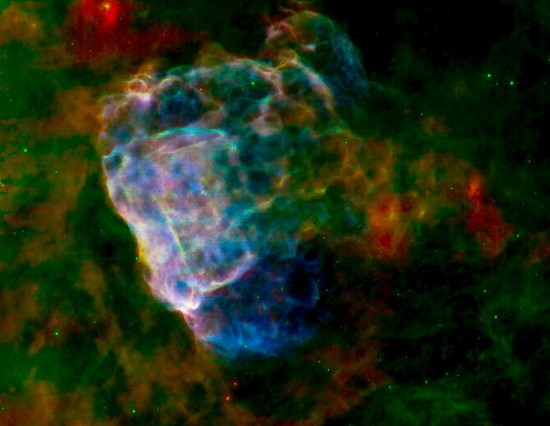Aug 25, 2014
Can shockwaves create X-rays?
Many Picture of the Day articles point out that stars are not simplistic globes of hot gas under pressure, they are composed of plasma. Plasma is electrically charged. Since it is ionized, it does not behave like a pressurized gas, so shockwaves and gravitational instabilities are insufficient when it comes to explaining the birth and death of stars.
In the laboratory, plasma isolates itself with thin walls of opposite charge called double layers. Could charge separation also take place in the short circuit discharges known as supernova remnants? Electric Universe theory proposes that a supernova is not an exploding star in the conventional sense. Instead, supernovae reveal double layer explosions in plasma. Since star power comes from external electric charges flowing through circuits in space, radiation and “wind” from stars are due to electric arc discharges that make up stellar coronas, chromospheres and photospheres.
Supernovae are the result of a circuit break in stellar “power grids”, where the stored electromagnetic energy from an entire circuit is suddenly focused at one point. This happens because, in exploding double layers, the energy of an entire electric circuit flows into the explosion, increasing expansion far from the surface of the star, which, in turn, generates a nebular formation known as a supernova remnant.
A recent press release describes “an irregular shock wave” from an exploded star known as Puppis A. As the shockwave “slams into surrounding clouds of dust and gas”, its force is said to generate X-rays where the wavefront meets gas and dust. As the announcement indicates, the image at the top of the page is composed of an infrared image from the Spitzer Space Telescope in the 24 and 70 micron bands (green and red), while X-rays detected by the XMM-Newton Space Telescope at 0.3 to 8000 electron volts are revealed in blue.
As mentioned, shockwaves are too slow and far too weak a force for X-rays to be created by an expanding wavefront. Double layer detonations, on the other hand, push ionized gas and dust into ultraviolet or X-ray wavelengths, emitting bursts of high-energy light. Shock waves and heat (infrared) are secondary manifestations of a primarily electrical event.
The JPL and and Caltech teams’ analyses of the temperature is also most likely questionable. Thermal energy is created when atoms collide with each other. The various infrared wavelengths emitted from those atomic collisions correlate to their temperature. However, most radiant energy in space is synchrotron radiation produced by electrons as they travel through a magnetic field.
If ions are moving they are called an electric current. An electric current in a magnetic field is defined as “field-aligned” and is known as a Birkeland current. Birkeland currents release synchrotron radiation, and synchrotron radiation provides no indication of temperature.
It is moving electric charges in plasma that make up what is observed. Rather than an expanding shock front of gases, the nebular cloud is excited by electricity passing through the dusty plasma. The X-ray radiation is typical of that given off by highly excited gas discharge tubes, indicating extremely strong electrical stress.
Stephen Smith













